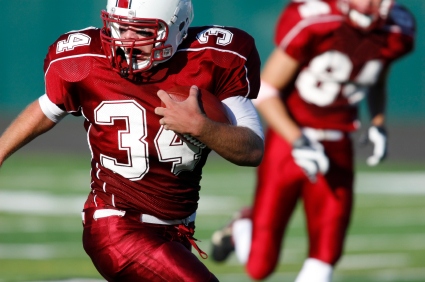Keys to Sports Injury Recovery
Rehabilitation is the key to a successful sports injury recovery. Rehabilitation to restore range of motion and mobility, neuromuscular control and strength, balance and endurance following an injury are all discussed through the links below. Let me show you the best exercises to achieve these goals, and how to work through your sports rehab to get back into the game.
The Rehab Process
Sports injury recovery starts with initial treatment after injury.
Usually centering around the R.I.C.E. principles, initial treatment
should begin within the first hours after injury.
Controlling swelling, resting the injured tissues, and controlling the
inflammation
process are all important in order to establish the
best healing environment for your rehab to occur in.
As pain and swelling decrease, usually within the
first 10-14 days, rehabilitation can begin in earnest. Range of motion
exercises,
isometric strengthening exercises, and other low
level activities can help to restore initial muscle control and joint
mobility. It's
important during this time to make sure not to do
anything to slow down the healing process.
The rehab exercises contained in this site focus on
activities that can be done once the initial inflammatory process has
subsided. You
should have minimal pain with daily activities, and
limited swelling before engaging in most of the activities. You should
be sure to
check with your doctor or health care professional
before attempting any of the exercises on this site.
Core Exercises
Exercises for the core should be a part of any sports injury recovery program. The core plays a vital role in stabilizing the body, as well as providing a stable base for the extremities. So whether you are recovering from an ankle, knee, shoulder, or elbow injury, be sure to explore the core exercises to get the most out of your recovery.
Shoulder Exercises
The shoulder is a complicated joint, and is important for athletes who participate in overhead activities. The exercises contained in this section focus on improving stability and control in the shoulder, as well as working to restore good muscle activation.
Hip Exercises
Exercises for the hip can be an important part of any recovery program following hip injury, but can also be very beneficial when recovering from knee and ankle injuries as well. Remember, everything is connected, which means that exercises for the hip will help to improve the function of your knee and ankle as well.
Knee Exercises
Whether you are recovering from patella femoral syndrome, patellar tendonitis, MCL sprain, or an ACL tear, exercises that improve knee function are important during your sports injury recovery. In addition to more traditional exercises like lunges, I also include functional, multi-plane exercises.
Ankle Exercises
Ankle sprains are the most commonly suffered sports injury. Foot and arch pain are also common with sports and fitness activities. You can work to eliminate some of these problems through exercise. Isolated strengthening, balance activities, and mult-plane functional exercises are just a few featured.
Whole Body Recovery
For most sports and fitness related injuries, there are often underlying
causes that increase the risk for injury. This is especially true for
overuse or chronic injuries like patella femoral
syndrome or rotator cuff tendonitis. Among these underlying causes are
usually mobility or
neuromuscular control deficits not only at the joint
in question, but also above and below.
With this in mind, as you work through your sports
injury recovery, be sure not to focus on just where
your injury is, but also work to improve the function of the joints
above and below. This will
ensure that you improve your overall function,
giving you a more balanced and efficient body.
For information on recovery from specific injuries,
be sure to check out my Solution Series E-Books. These programs include
specific exercises
tailored to the injury, and progress you through
your recovery.
Sports Injury Recovery -- Return to Sports Injury Rehab Home






